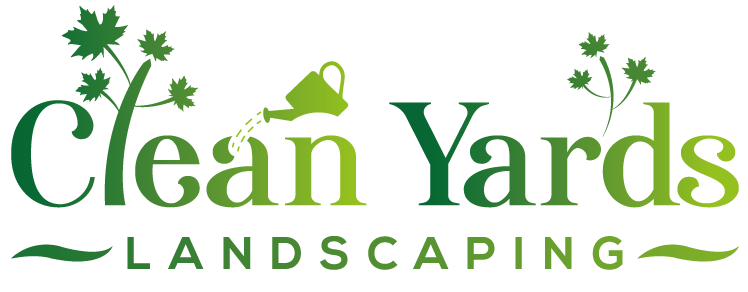Kars Ash Tree Alert: Spring EAB Check Can Save Your Tree
Quick Summary:
- Emerald Ash Borer (EAB) is a destructive beetle threatening ash trees in Kars and Ottawa.
- Spring is the ideal time to inspect your ash trees for EAB signs *before* leaves fully emerge.
- Key signs include D-shaped exit holes, canopy thinning (top-down), bark splits, and woodpecker damage ("blonding").
- Early detection allows for effective treatment options; heavily infested trees may require removal.
- This guide provides steps for inspection and information on managing EAB.
Introduction: Kars, Spring is Here! Time for an Ash Tree Check-Up
Well hello there, Kars! Can you feel it? Spring has finally decided to grace us with its presence here in our lovely corner of Ottawa. The Rideau River is flowing freely, the birds are belting out their tunes, and that urge to get digging in the garden or start planning those landscaping projects is probably hitting hard. It’s a wonderful time to be outdoors!
But amidst the excitement of warmer weather, there’s a little pest we need to talk about – think of it as the uninvited guest at the spring garden party. It's the Emerald Ash Borer (EAB), and unfortunately, it’s become a significant concern for ash trees throughout our region, including nearby communities like Manotick and Osgoode. This invasive beetle specifically targets ash trees, and catching an infestation early is key.
That’s why *spring* is the absolute perfect time for a quick ash tree health check. Why now? Before the leaves fully emerge, it’s often easier to spot some of the tell-tale signs EAB leaves behind, like D-shaped exit holes or unusual bark splitting. Plus, as temperatures rise, any surviving beetles from last year start to get active. Giving your trees a once-over now is a proactive step in proper tree care.
Consider this article your friendly neighbourly guide. We’ll walk you through how to quickly inspect your ash trees, what specific signs to look for, and what your options are if you suspect EAB might be crashing your backyard party. Let’s work together to keep the beautiful tree canopy of Kars healthy and thriving!
For more information on EAB identification from official sources, visit the Canadian Food Inspection Agency (CFIA) EAB page.
The Unwelcome Guest: What Exactly is EAB and Why Kars Residents Need to Know
Okay, let's pull back the curtain on this pesky critter – the Emerald Ash Borer, or EAB for short. Think of it as that one party guest who shows up uninvited, eats all the good snacks, and leaves a huge mess. Except, in this case, the "party" is your beautiful ash tree, and the "mess" is unfortunately devastating.
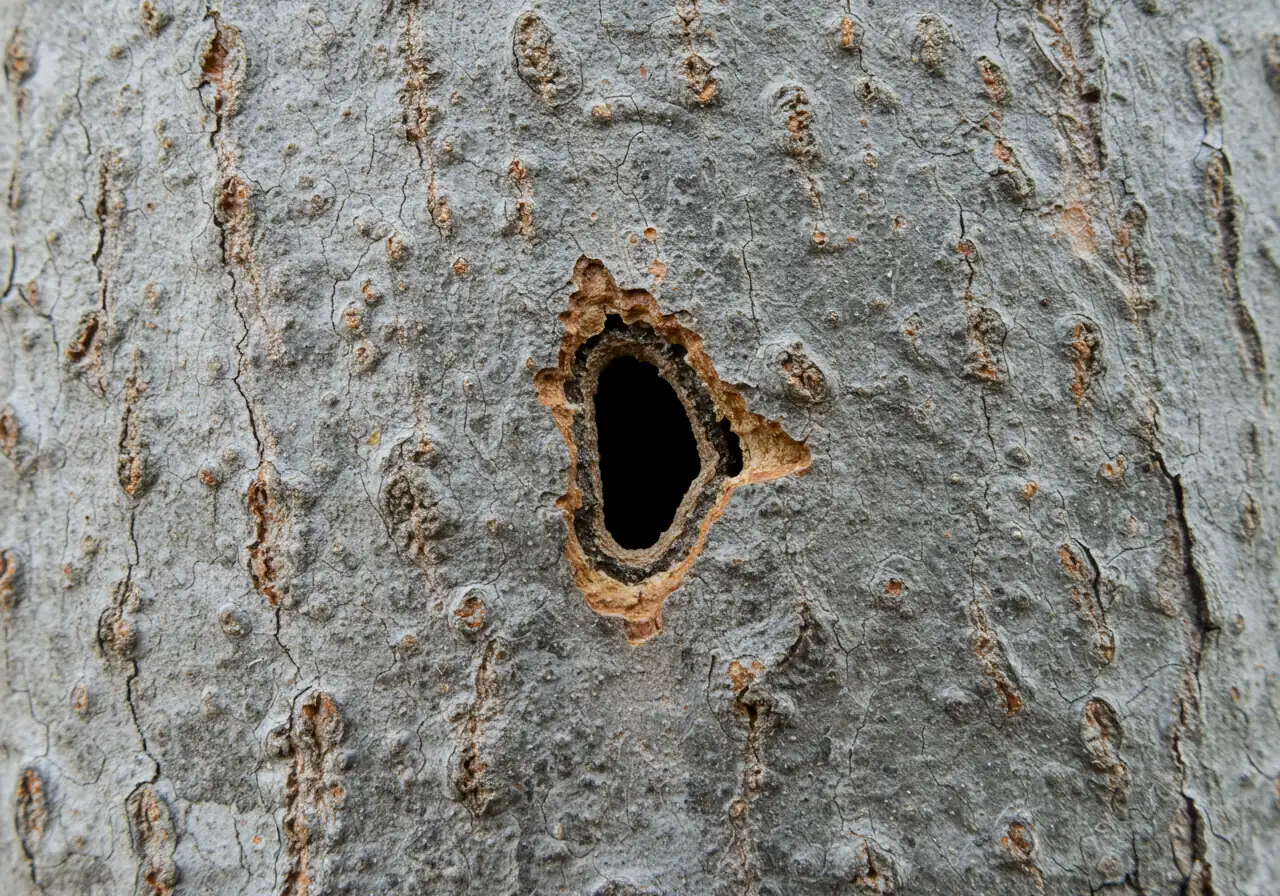
So, what *is* this metallic green beetle? EAB is an invasive insect, originally from Asia, that has a one-track mind: it *only* attacks and kills ash trees (genus *Fraxinus*). It doesn't bother maples, oaks, or your prize-winning roses, thankfully. But for ash trees, it's bad news. We have a fair number of ash trees contributing to our lovely green canopy here in Kars and across Ottawa, including nearby areas like Greely and Metcalfe, making this a local concern for many homeowners.
Here’s the sneaky part: the adult beetles nibble on leaves, which isn't the main problem. The real damage happens *under* the bark. Adult females lay eggs on the bark, and when these hatch, tiny larvae burrow inside. These larvae are the true villains. They spend months, sometimes years, munching away on the tissue just beneath the bark – the tree's vital pipeline for transporting water and nutrients from the roots up to the leaves. Imagine tiny vandals carving tunnels all through the plumbing system! Eventually, these tunnels, called galleries, girdle the tree, cutting off its life support. The tree essentially starves and dehydrates.
The lifecycle is pretty straightforward: egg -> larva (the damaging stage) -> pupa -> adult beetle emerges (leaving a distinct D-shaped exit hole, about 3-4 mm wide).
Why should *you* in Kars care? Because EAB spreads easily, often hitching rides on firewood or nursery stock, and it doesn't respect fences or property lines. An infestation in one yard can quickly threaten neighbouring trees. Our Ottawa climate, with its cold winters, unfortunately doesn't stop EAB completely. Healthy trees are always more resilient, which is why good overall yard care is important. This includes thinking about things like soil health – getting enough air to the roots can make a difference, something discussed in Expert Advice on When to Aerate Your Greely Lawn. Even preparing your garden beds properly in the fall contributes to a healthier ecosystem for your trees, much like the tips shared for Nepean Fall Garden Prep.
Understanding EAB is the first step. While it's a serious threat, knowing what you're up against helps you spot potential problems early. Remember, a stressed tree can sometimes be more vulnerable. Things that stress trees include compacted soil, sometimes made worse during construction like when Building a Patio on Barrhaven Clay Soil, or even drought stress, which is why water-wise gardening techniques, like those used in Greely Xeriscaping for Clay Soil, can indirectly benefit nearby trees by conserving soil moisture. If you're ever unsure about your tree's health or suspect EAB, checking out professional Landscaping and Yard Care Services is always a good option.
Playing Detective: Your Step-by-Step Spring EAB Inspection Guide
Okay, Kars crew, time to put on your detective hats (or gardening gloves, whichever fits better!). Spring is the prime time to investigate your ash trees for any signs of that uninvited guest, the Emerald Ash Borer. Catching it early makes a world of difference. Don't worry, you don't need a magnifying glass and a deerstalker cap, just keen eyes and a few minutes. Let’s get sleuthing!
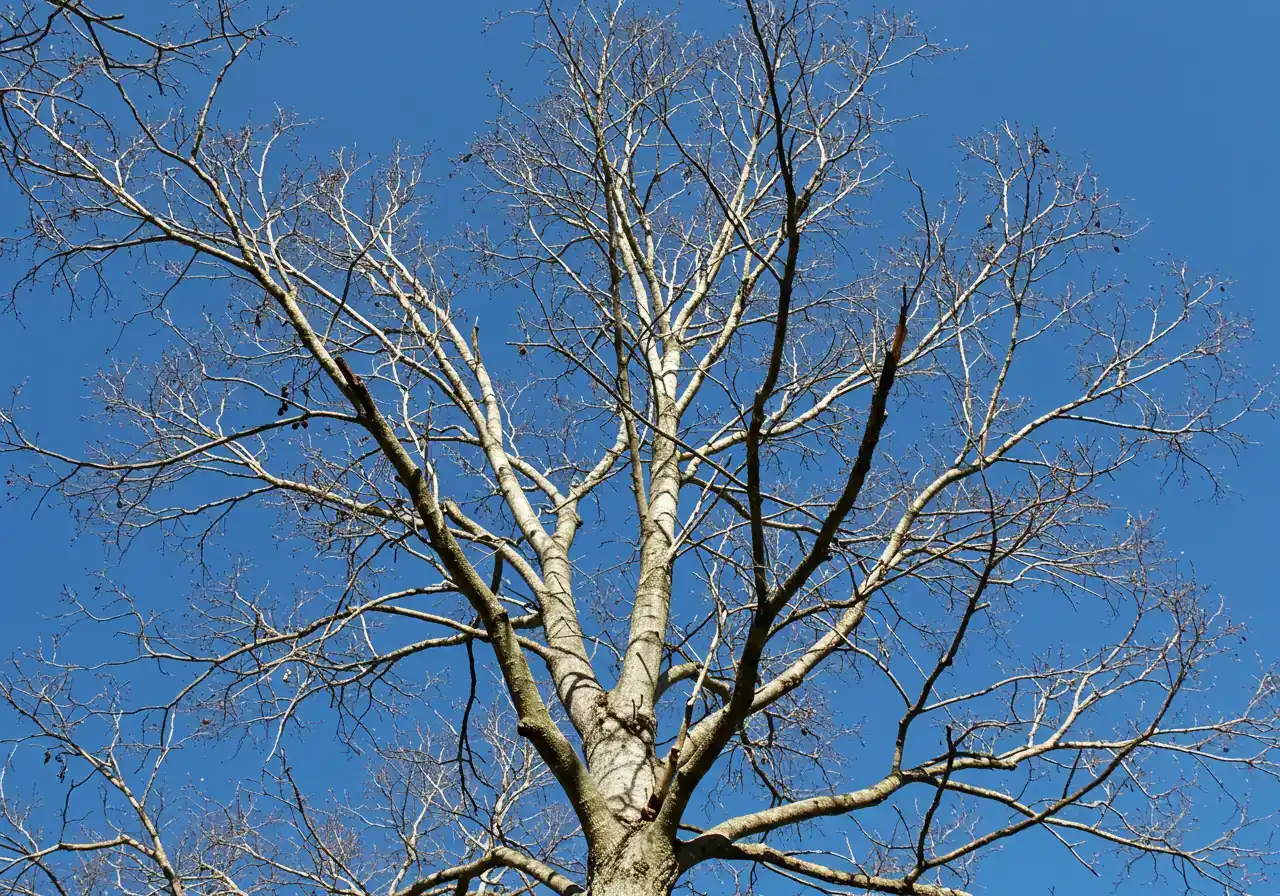
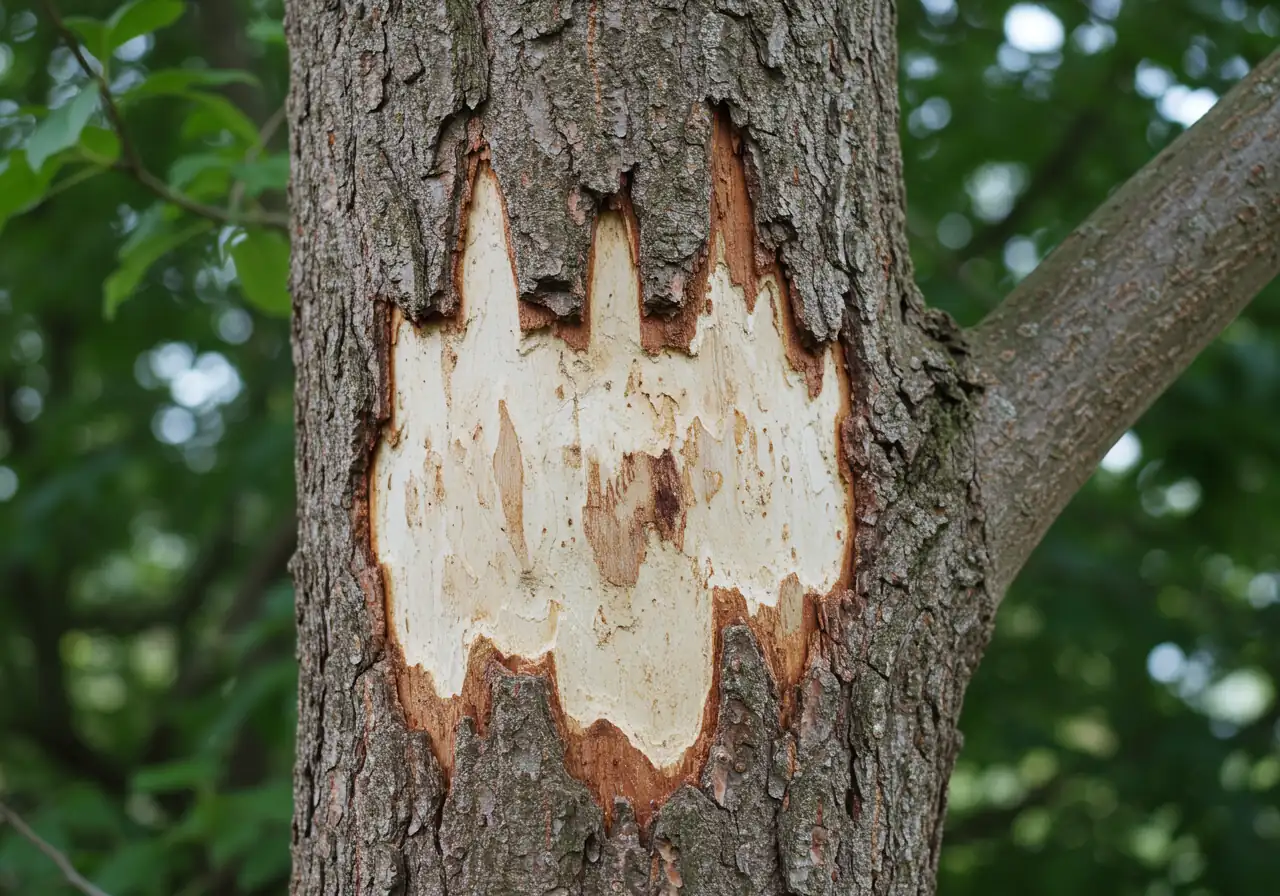
Here’s your mission, should you choose to accept it:
-
Know Your Target (Is it *Really* an Ash Tree?): Before you start pointing fingers, make sure you're actually looking at an ash tree (*Fraxinus* species). Ash trees typically have:
- *Opposite Branching:* Branches and buds grow directly across from each other, not staggered. (Think maple trees for comparison).
- *Compound Leaves:* Each leaf is actually made up of 5-11 smaller leaflets. In early spring, you might only see buds, but the opposite branching pattern is key!
- *Distinct Bark:* Mature ash trees often have diamond-shaped ridges in their bark. Younger trees have smoother bark.
-
Case the Joint (Examine the Trunk and Base): Start your inspection low down. Walk *all the way around* the tree trunk. Look closely for:
- *Tiny D-Shaped Holes:* These are the calling cards left when adult beetles exit the tree. They're small (about 3-4 mm, or 1/8 inch across) and have a flat bottom and rounded top. They can be tricky to spot!
- *Vertical Bark Splits:* As larvae tunnel underneath, the bark can crack and split vertically. You might even see the S-shaped larval tunnels (galleries) underneath if the bark is loose.
- *Weird Sprouts:* Notice unusual leafy shoots growing from the lower trunk or roots? These are called epicormic sprouts and are often a sign the tree is stressed.
- *Woodpecker Damage ("Blonding"):* If woodpeckers are suddenly *very* interested in your ash tree, it’s a major clue! They peck away the outer bark to get at the tasty larvae inside, leaving lighter patches called "blonding." We see this indicator pop up across Ottawa, including areas like Richmond and Barrhaven.
-
Look Up! (Inspect the Canopy): Now, tilt your head back (or grab binoculars!) and examine the tree's crown. EAB damage often starts way up high.
- *Thinning Leaves:* Does the top third of the canopy look thinner than the rest? Are leaves sparse or smaller than usual once they emerge?
- *Branch Dieback:* Are branches at the top losing leaves or dying off completely? This top-down decline is a classic EAB symptom.
-
Gather Witness Reports (Consider the Bigger Picture):
- *Compare Notes:* Look at other ash trees in your Kars neighbourhood or nearby areas like Metcalfe or Marionville. Do they look healthier or show similar signs?
- *Overall Health:* Remember, a healthy tree is a more resilient tree. Good overall yard care, like proper Mulching and Edging around the base (but not piled against the trunk!), supports tree health. Even keeping the rest of your property tidy, maybe with help from a service like our Vernon Yard Cleanup Service, contributes to a less stressful environment for your trees. Maintaining good soil preparation is also key for root health.
What If You Find Clues?
Don't panic! Seeing one potential sign doesn't automatically mean EAB. However, if you notice several of these indicators, especially canopy thinning and woodpecker damage, it’s wise to get a professional opinion. Experts offering comprehensive Landscaping and Yard Care Services can often provide tree assessments. If you're considering treatment options or potential removal (the sad reality for heavily infested trees), you can always ask for a professional quote – we even have a page where you can provide Estimate Feedback on quotes you receive. For ongoing property care that includes keeping an eye on tree health as part of the bigger picture, looking into a City Garden Maintenance Service can be beneficial.
Doing this quick spring check-up is a fantastic way to be proactive about your landscape's health here in Kars. Happy sleuthing!
Spring Awakening: Why This Season is Crunch Time for EAB Checks
Alright folks in Kars, Winchester, Vernon, and across Ottawa – spring isn't just about tulips and tidying up the garden beds. While you're planning your gardening projects, there's another crucial task: checking your ash trees for Emerald Ash Borer (EAB). Think of it as preventative maintenance before things get *really* busy, both in your yard and inside the tree!
So, why is *right now* so important?
- Better Visibility: Before the leaves fully unfurl, it’s much easier to spot those sneaky clues on the bark, like the D-shaped exit holes or woodpecker damage we talked about earlier. It’s like trying to find a dropped key – easier on bare ground than in tall grass! Catching these signs early during your spring gardening kick-off is ideal.
- Beetle Wake-Up Call: As temperatures climb in late spring and early summer (usually June here in Ottawa), the adult EAB beetles that survived winter start emerging from trees. They’ll feed on leaves for a bit, then mate and lay eggs on the bark. Catching signs *before* this happens gives you a head start on deciding what to do next.
- Treatment Timing is Everything: If you're considering treatment options (like trunk injections), they are most effective when applied in spring as the tree actively transports water and nutrients upwards. Early detection means you have more time to consult professionals, get quotes, and schedule treatment before the peak summer damage period begins. Waiting too long can unfortunately mean the tree is too far gone to save, leaving removal as the only option. For insights into our quality commitment, check our Google My Business page reviews.
Early Spring (Apr-May)
Overwintering larvae resume feeding under bark. Bare branches make inspection easier. Best time for visual checks!
Late Spring/Early Summer (June-July)
Adult beetles emerge, feed, mate, lay eggs. Critical window for treatment decisions & application.
Summer (July-Aug)
New larvae hatch, begin tunneling, causing significant damage. Signs become more apparent but treatment window narrows.
Fall/Winter
Larvae continue feeding until cold sets in. Adults die off. Planning for next spring's actions begins. Consider fall prep for overall yard health.
Doing a thorough spring check is key. It's often while undertaking other seasonal tasks, perhaps a big property refresh similar to our Metcalfe Property Cleanup Service, that homeowners first notice subtle tree health changes. Keeping a regular eye on your entire yard, maybe even as part of an ongoing City Garden Maintenance Service or general Garden Maintenance, can also help catch problems early before they escalate.
If you do find suspicious signs, don't delay seeking advice. Before engaging any service, it's always wise to understand the specifics; for example, reviewing details like our general Company Service Terms and Conditions can clarify expectations. Then, feel free to Reach Out for Expert Advice. Getting professional eyes on the situation can make all the difference in saving your ash tree. Often, after submitting an online request, you'll land on a confirmation – a sort of digital handshake like our standard Submission Thank You Page. Don't let EAB catch you off guard this spring; give those ash trees a quick look!
Taking Action: Treatment, Prevention, and Protecting Kars' Green Canopy
Okay, so you've played detective and suspect EAB might be eyeing your beautiful Kars ash tree. Don't despair! While EAB is a serious challenge, there *are* steps you can take. Let's talk about treatment, prevention, and how we can all pitch in to protect our community's lovely green canopy, from here to Nepean.
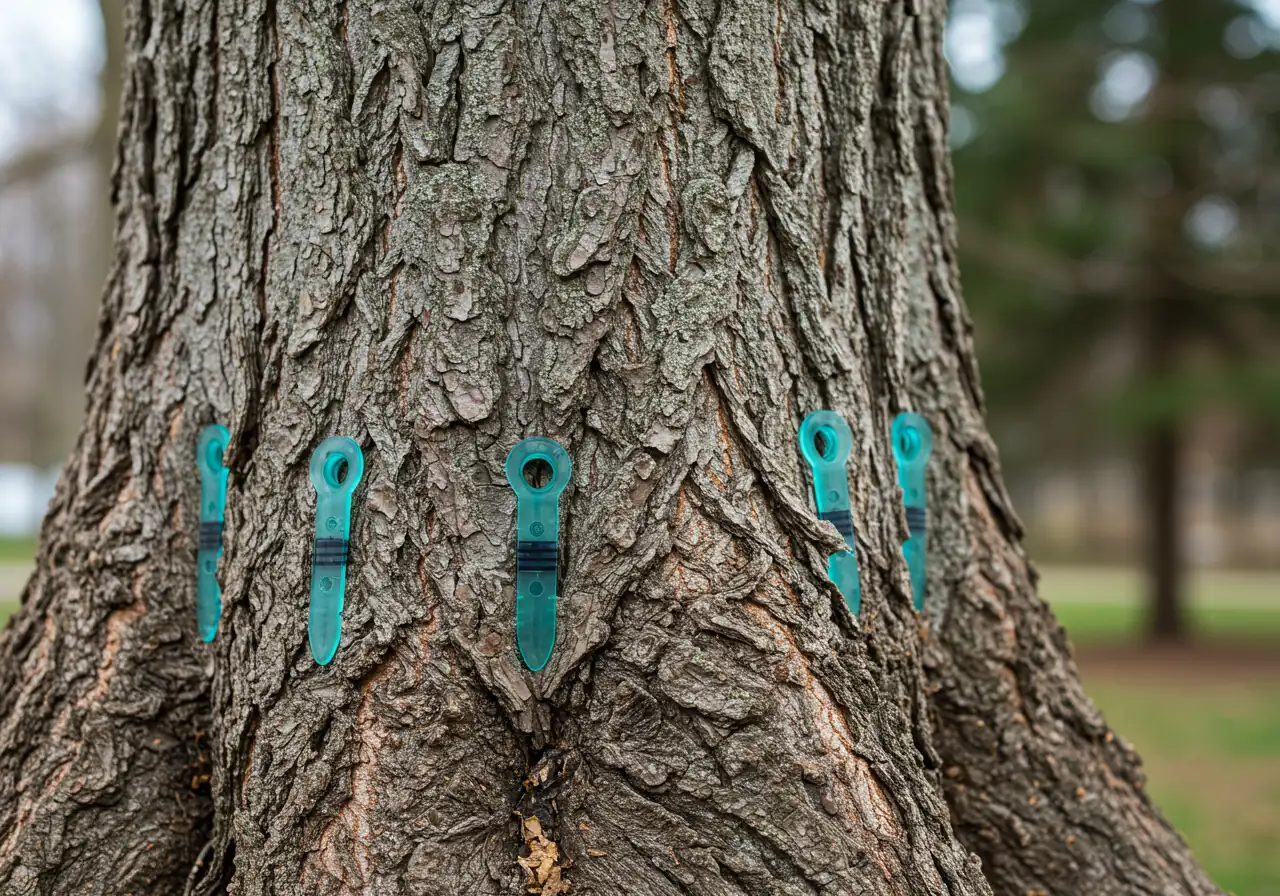
Giving Your Tree a Fighting Chance: Treatment Options
The most common and effective treatment for EAB is *trunk injection*. Think of it like a vaccine for your tree. A certified professional injects insecticide directly into the tree's vascular system. This protects the tree from the inside out, targeting those munching larvae.
- *Pros:* It’s highly targeted, minimizing impact on beneficial insects compared to spraying. It works!
- *Cons:* It needs to be done by a professional, can be costly, and typically needs repeating every one to two years.
- *Key Point:* Treatment is *most effective* on healthy trees that are *lightly* infested. Early detection, like we discussed, is absolutely crucial. Waiting too long means the tree might be too damaged for the treatment to work.
What if a tree is already heavily infested? Sadly, removal is often the only responsible option to prevent the beetles from spreading further and to avoid the hazard of falling branches from a dead tree. Proper disposal of the wood is vital – don't move infested firewood! Managing the aftermath is important; a thorough cleanup, perhaps like the Comprehensive Ottawa Property Cleanup Service offers, ensures debris is handled correctly. For ongoing vigilance, some homeowners opt for a regular City Yard Cleanup Service which helps keep properties tidy and allows for early spotting of tree issues.
| Action | Best For | Pros | Cons |
|---|---|---|---|
| Trunk Injection | Healthy, valuable ash trees caught early | Saves the tree, targeted | Ongoing cost, requires professionals |
| Tree Removal | Heavily infested or dead trees | Stops local spread, removes hazard | Loses the tree, cost of removal/cleanup |
| Doing Nothing | Not Recommended | No initial cost | Tree dies, becomes hazardous, spreads EAB |
Smart Prevention: Thinking Ahead
The absolute best prevention strategy now? *Don't plant new ash trees.* Instead, let's diversify! Planting a variety of tree species makes our urban forest more resilient. Consider native Ottawa-friendly alternatives like Oak, Maple (avoiding Norway Maple, another invasive), Hackberry, Serviceberry, or Ironwood. These add beauty and are better suited to thrive without the EAB threat. Selecting the right materials is key for any landscaping, learn more about Material Selection.
Happy Trees are Healthy Trees: General Care Tips
While good care won't make an ash tree immune to EAB, a healthy tree is generally stronger and may withstand stress better. Think of it as boosting its immune system! Good Lawn Care practices contribute to overall yard health.
- *Water Wisely:* Especially during dry Ottawa summers, give your trees a good, deep soaking every week or two if rainfall is scarce. Let the water soak down to the deeper roots.
- *Mulch Magic:* Apply a layer of organic mulch (like wood chips) around the base – about 2-4 inches deep, extending out towards the edge of the branches if possible, but *never* piled against the trunk (no "mulch volcanoes" please!). This helps keep moisture in, regulates soil temperature, and slowly improves the soil as it breaks down. Proper mulching is a cornerstone of good gardening practice.
- *Protect the Roots:* Tree roots extend further than you might think! Be mindful during any landscaping projects near your trees. Avoid digging deep trenches or driving heavy equipment over the root zone, as this compacts the soil and damages roots. Even activities like new lawn installation need care; ensuring proper techniques for Quality Sod Installation near existing trees helps minimize root disturbance. Similar care applies across the region, whether it's Kars or involving work handled by our Marionville Property Cleanup Service team near Kenmore, where respecting established plantings is key.
- *Prune Properly:* Remove dead, damaged, or crossing branches. This improves air circulation and structure. However, try to avoid heavy pruning during the main EAB flight season (late spring/summer) if possible.
Unsure about your ash tree's condition or the best course of action – treatment, removal, or just watchful waiting? Don't hesitate to Get in Touch for Professional Advice. Getting an expert opinion from qualified professionals is the best way to make informed decisions for your trees and property. Together, we can take meaningful action to manage EAB and keep Kars, and all of Ottawa, beautifully green! See some examples of our work on the Transformations page.
For tree care advice specific to the city, check the City of Ottawa's Tree Health page.
More Than Just One Tree: EAB's Ripple Effect in Our Communities
Okay, let's zoom out a bit. The Emerald Ash Borer isn't just a problem for *your* tree; it's a community-wide headache that sends ripples through our neighbourhoods, from Kars and Manotick right out to Russell and Embrun. Think of it less like a single leaky faucet and more like a potential water main break affecting the whole street!
When EAB moves in, it doesn't just take out one tree. It changes the look and feel of our streets and parks. Those big, beautiful ash trees that provide shade in summer? Gone. The lovely green canopy lining a quiet street in Russell? Suddenly sparse. This loss affects more than just aesthetics; it impacts property values too. Fewer mature trees can unfortunately mean less curb appeal. Plus, there's the shared cost – the City of Ottawa faces significant expense managing infested ash trees on public land, and homeowners bear the burden for trees on their own properties. Dealing with a dead or dying tree often involves significant Property Clean Up to remove hazards and debris safely.
Environmentally, the loss of thousands of ash trees across Ottawa hurts. Trees are our natural air conditioners and air purifiers. They soak up stormwater, reducing runoff, and provide vital food and shelter for birds and other wildlife. Losing this canopy cover contributes to the "urban heat island" effect, making our summers feel even hotter. It’s a domino effect that disrupts the local ecosystem we enjoy during our gardening and landscaping activities.
Hypothetical EAB Impact Over Time (Unmanaged Area)
Illustrative data showing increasing ash tree mortality without intervention.
So, what can we do besides wring our hands? Talk to your neighbours! EAB doesn't respect property lines. If you suspect an issue, chances are someone nearby does too. Sharing information (while respecting privacy, of course – before sharing details when requesting services online, it's always good practice to review the company's Privacy Policy) and potentially coordinating inspections or removals can sometimes be more efficient. Community awareness is key. Keeping your own space tidy, maybe with an Ottawa Garden Clean Up Service, sets a good example and helps maintain neighbourhood pride even amidst challenges. Handling the aftermath of EAB, like significant branch debris from struggling trees, might require more than typical yard work, similar to the scale seen in a full Marionville Property Cleanup Service or even a City Property Cleanup Service.
Looking ahead, the best defence is diversity! When planting new trees to replace lost ash or just to enhance your landscape, *don't* plant more ash. Choose a variety of hardy, Ottawa-appropriate species. Great options include:
- Oaks (Bur, Red)
- Native Maples (Sugar, Red – *not* invasive Norway Maple)
- Serviceberry
- Hackberry
- Ironwood
- Kentucky Coffee Tree
Preparing the perfect spot for a new replacement tree often starts with clearing the area, a task sometimes included in services like our Marionville Garden Clean Up Service or Metcalf Garden Clean Up Service or City Garden Clean Up Service, ensuring the newcomer gets the best start. By working together and planting smart, we can help rebuild a more resilient and beautiful green canopy for all our communities.
EAB Management Approaches
Trunk Injection
Insecticide injected directly into the tree's vascular system. Most effective on healthy trees with early-stage infestation (<30% canopy decline). Needs professional application and typically requires repeat treatments every 1-2 years. Targeted and environmentally conscious compared to spraying.
Consider if: Your ash tree is valuable, relatively healthy, and you're committed to ongoing maintenance costs.
Tree Removal
Necessary for heavily infested (>50% canopy decline), dead, or hazardous ash trees. Prevents further spread of EAB from that tree and eliminates safety risks from falling limbs. Requires professional removal and proper wood disposal (do not move infested firewood!).
Consider if: The tree is too damaged for treatment, poses a safety risk, or you prefer not to invest in ongoing treatments. Our Ottawa Yard Cleanup Service can help with debris.
Prevention Through Diversity
The best long-term strategy for the community. Avoid planting new ash trees. Instead, choose a variety of native or well-adapted species resistant to EAB (Oaks, Maples, Hackberry, etc.). This builds a more resilient urban forest.
Consider for: All new tree plantings on your property. Enhancing landscape resilience for the future. Explore options with Garden Install services.
Kars EAB Quick Facts: Don't Let This Pest Bug You!
Got questions about that shiny green beetle causing trouble for ash trees? We've got answers! Here are some quick facts to help you understand Emerald Ash Borer (EAB) and what it means for your Kars property.
Think of EAB as the worst kind of party crasher, but only for ash trees! This invasive beetle, originally from Asia, is unfortunately well-established here in Ottawa, including Kars and nearby spots like Manotick. The *real* damage isn't the adult beetle munching leaves, but its larvae tunneling under the bark. These tunnels cut off the tree's ability to move water and nutrients, eventually leading to the tree's decline and death. It's a serious threat to our beautiful ash canopy.
Playing detective in your own yard is key, especially in spring! Look for:
- Tiny *D-shaped* exit holes (about 1/8 inch) on the trunk and branches.
- Vertical cracks or splits in the bark, maybe revealing S-shaped tunnels underneath.
- Thinning leaves or dead branches starting at the *top* of the tree.
- Lots of new, leafy sprouts growing from the lower trunk (stress signal!).
- Increased woodpecker activity – they love EAB larvae, and their feeding can leave patches of lighter bark ("blonding").
Catching these signs early during your spring gardening rounds gives you more options.
Don't panic, but do act! If the infestation is caught *early* and the tree is still healthy, trunk injections by a certified professional can save it (though it requires repeat treatments). If the tree is heavily infested (usually more than 30-50% canopy decline), removal is often the most responsible choice to prevent further spread and avoid safety hazards from falling branches. Dealing with the aftermath might involve significant tidying; sometimes a Comprehensive Ottawa Yard Cleanup Service can help manage the debris responsibly. Always consult with a qualified tree care expert to assess your specific situation.
Sadly, you can't completely shield an existing ash tree from EAB without treatment. The *best* prevention strategy now is *not* to plant new ash trees. Instead, diversify! Choose different, hardy tree species suitable for our Ottawa climate when planning your landscaping. For existing trees, good general care helps keep them vigorous: water deeply during dry spells, apply mulch properly (away from the trunk!), and avoid damaging the root zone. When planting replacements, ensure Proper Soil Preparation to give the new tree the best start. Healthy trees are generally better equipped to handle stress, though EAB is a formidable foe.
EAB is definitely a community-wide issue. It doesn't care about property lines! Widespread ash tree loss impacts neighbourhood aesthetics, property values, local wildlife, and even contributes to hotter summer temperatures. Managing dead or hazardous trees on public and private land costs everyone. That's why it's crucial *not* to move firewood, as this is a primary way EAB spreads to new areas. Coordinated efforts and community awareness help. Sometimes managing larger debris requires specific help, like calling in a crew equipped for the job, such as our Metcalfe Yard Cleanup Service team handles for properties needing significant clearing.
It's always best to consult with certified arborists or reputable, experienced landscaping and tree care companies for EAB diagnosis and treatment recommendations. While online resources (like this one!) can provide great information, getting professional eyes on your specific trees is invaluable. We aim to provide helpful, practical advice – you can Learn More About Us and our commitment to healthy yards. When requesting quotes or services online, it's also wise practice to understand how your information is handled by Reviewing Our Privacy Policy. Don't hesitate to reach out for expert help!
Your Ash Tree Questions Answered: Ottawa & Kars EAB FAQs
Unfortunately, EAB is still very much an active issue here in Kars and across the wider Ottawa region. While the initial wave caused significant damage, the beetle population persists, and unprotected ash trees remain vulnerable. Think of it less like a sudden storm and more like a persistent drizzle – it’s an ongoing management challenge for homeowners and the city. Staying vigilant with inspections, especially during spring gardening season, is still highly recommended.
It's smart to be aware! EAB *does* spread easily between nearby trees. While you can't force your neighbour to treat or remove their tree, open and friendly communication is the best first step. Share your concerns (and maybe this info!). Focus on your own trees – keep them healthy and consider protective treatments if they are valuable ash trees. If their tree becomes a clear hazard (e.g., large dead branches overhanging your property), you might need to discuss it further or check local bylaws, but start with a neighbourly chat.
Great question! The most common and effective treatments involve injecting insecticide *directly* into the tree trunk. This method is highly targeted to the tree's transport system, minimizing exposure to the surrounding environment, unlike sprays. When done by certified professionals, it's considered safe for families and pets enjoying their yard. As for cost, it varies depending on the tree's size and the specific product used. It's typically a few hundred dollars per treatment, which needs repeating every 1-2 years. Always get quotes from reputable providers. If you want to understand our commitment to responsible practices, you can Learn more about our approach.
We strongly advise against DIY treatments or removals for EAB-infested trees. Effective trunk injections require specialized equipment and certified applicators to handle the insecticides safely and correctly. For removal, especially larger trees, it's a significant safety hazard involving risks of property damage or personal injury. Dead or dying ash trees can be unpredictable. It's much safer to hire insured professionals for removal and cleanup – getting professional help like our Marionville yard cleanup service ensures the job is done safely and debris is handled properly.
Losing a mature tree is tough, but it's a great opportunity to diversify and improve your landscape! Thankfully, many fantastic, EAB-resistant trees do well in our Ottawa region conditions. Consider these native or well-adapted options:
- Oaks (Bur, Red) – Sturdy and long-lived.
- Maples (Sugar, Red – *avoid* invasive Norway Maple) – Classic Canadian choices.
- Serviceberry – Offers multi-season interest (flowers, berries, fall colour).
- Hackberry – Tough and adaptable urban tree.
- Kentucky Coffee Tree – Unique texture and drought-tolerant once established.
Planting a variety adds resilience to your yard. If you need assistance with planting your new tree correctly, consider expert garden install services. Replacing a lost tree can truly revitalize your space; you can even See inspiring landscape transformations for ideas!
Conclusion: Give Your Kars Ash Trees a Fighting Chance This Spring
Alright, Kars neighbours, let's bring it home! This spring, while you're diving into exciting *gardening* and *landscaping* projects, please remember to give your ash trees a little extra attention. That pesky Emerald Ash Borer won't wait for an invitation, and *spring* is the absolute best time for a quick health *inspection*.
Catching the signs of EAB early can make all the difference. It significantly boosts the chances of successful *treatment* and could save you from the tougher decision of *removal* later on. Think of it as vital preventative *tree care*! Your beautiful ash trees are worth the effort.
So, this weekend, take a few minutes – walk around your ash trees, look up, look closely at the bark. If anything seems off, don't shrug it off or guess. The smartest move is to get *professional help*. There are knowledgeable experts serving *Kars* and the greater *Ottawa* area who can accurately diagnose the issue and guide you on the best steps forward. Let’s give our ash trees the fighting chance they deserve!
